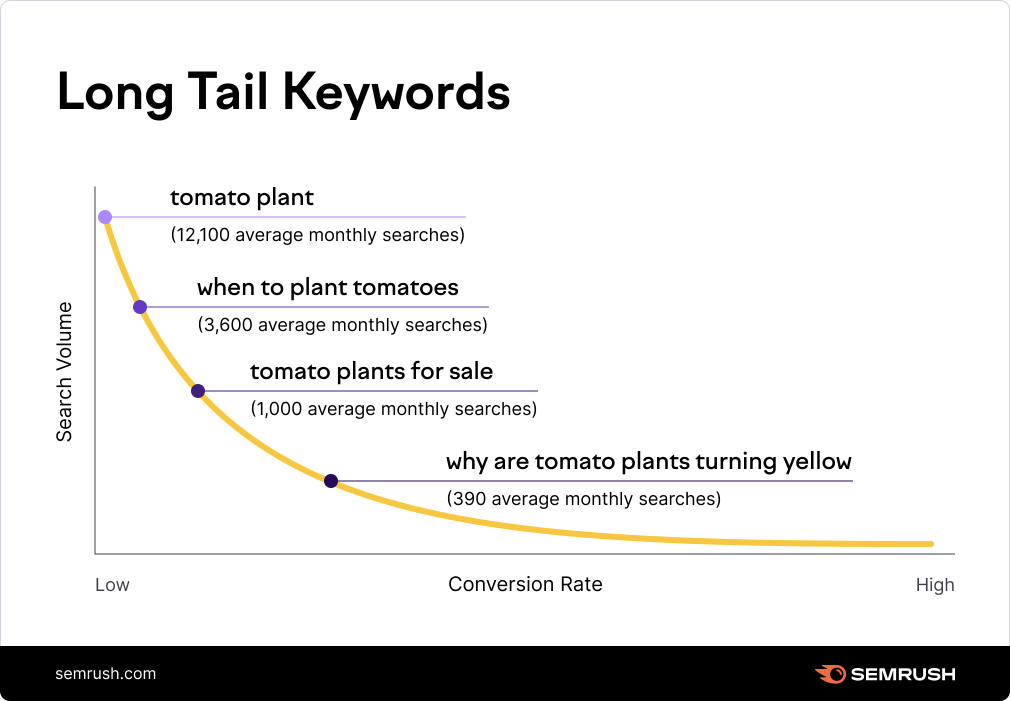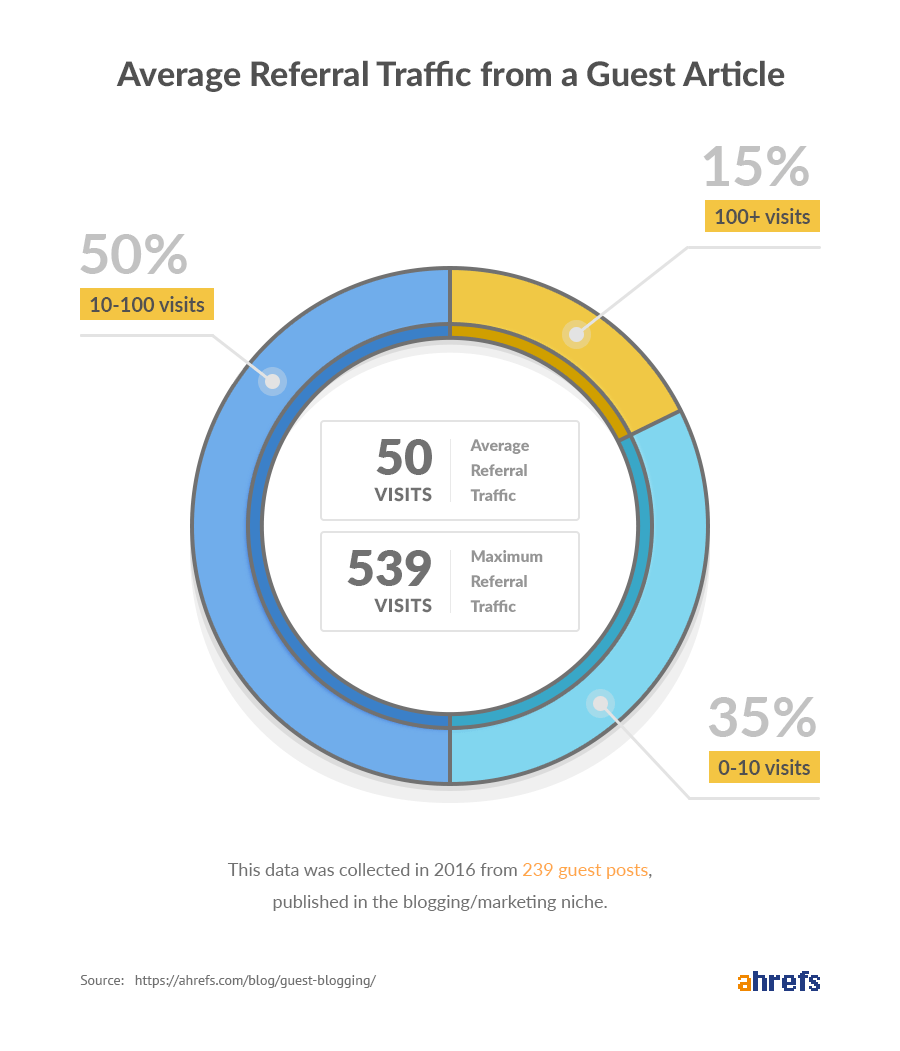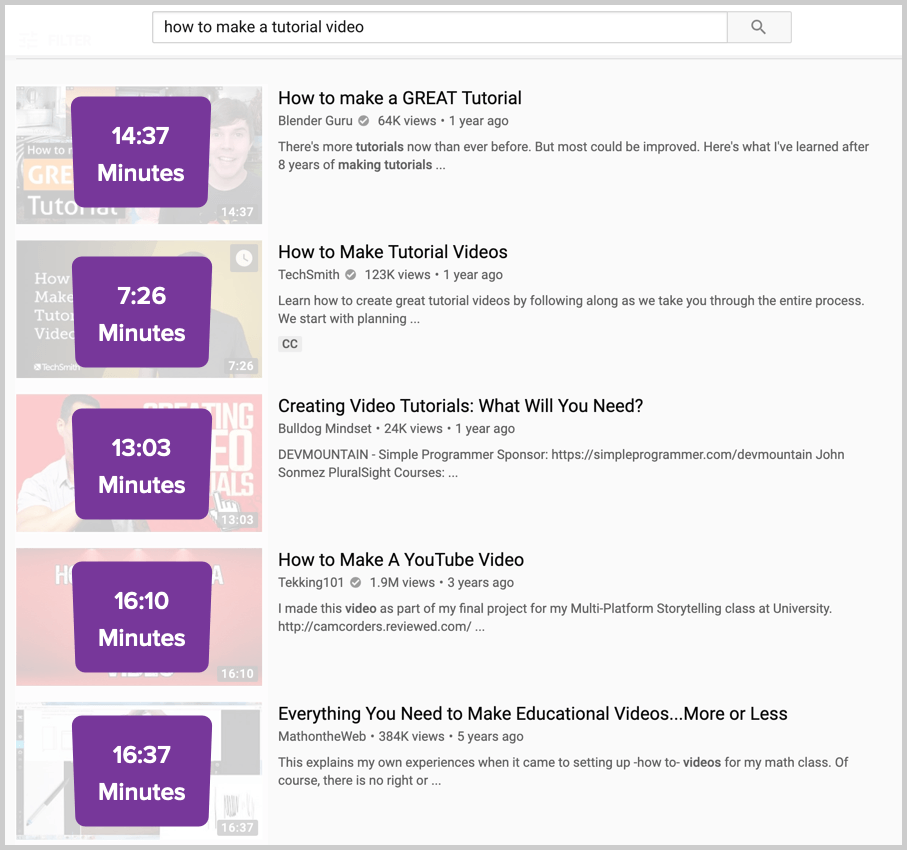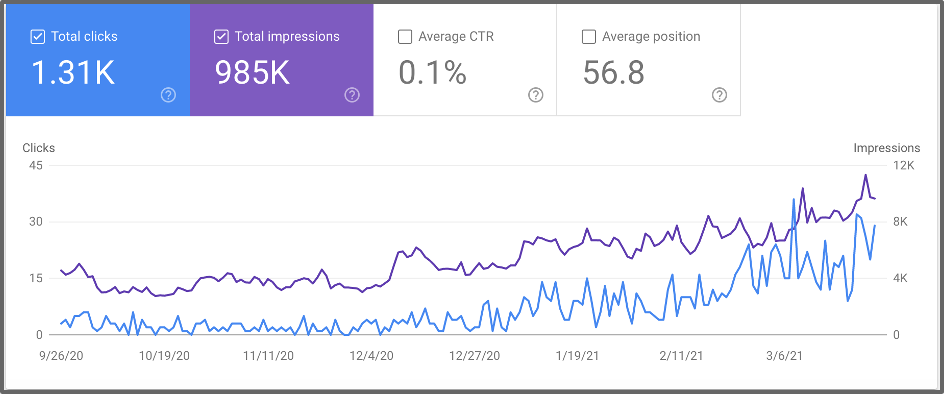Organic traffic refers to visitors who come to your website after searching on a site such as Google, Bing, or Yahoo.
Organic traffic takes time for SEO to generate results, but it's the best form of traffic for your website.
For this reason.
Read More : How To Optimize My Website For More Traffic And Higher Conversions?
Organic traffic is targeted, which means users who click through to your website have a specific intent and have a higher conversion rate than a random visitor from a paid search.
Organic traffic can also boost your credibility because websites that rank organically are more likely to be trusted by users.
Ranking high in search results is a dream for any website owner or marketer. If it ranks on the first page, it will surely get a lot of organic traffic. If you don't rank on the first page, your dream remains just that: a dream.
Here are eight actionable tips for driving organic traffic to your website:

Writing quality content is only half the battle if you want to learn how to drive traffic to your website. You can dramatically increase organic traffic by focusing on long-tail keywords in your keyword research.
Long tail keywords are a combination of three or four words, like "best WordPress security plugins" or "Lagos restaurants". You can use long-tail keywords to create catchy titles for your blog posts. Consider using tools like Ahrefs Free Keyword Tool when researching keyword ideas.

Influencers usually have a large following that interacts with them on a regular basis. Mentioning and recommending your brand can be a game changer and drive massive organic traffic to your website. You can also create new and original content for your brand.
You can attract new leads by using an influencer as a brand ambassador, especially if you have a small business.
![On-Page SEO: The Practical Guide For SEO Beginners [2023]](https://mangools.com/blog/wp-content/uploads/2020/10/on-page-seo-guide-illustration.png)
In addition to creating and publishing quality content, you need to optimize your web pages for search engines while learning how to drive traffic to your site.
On-page SEO is all about optimizing your images, HTML tags, and titles. Make sure your images support your content and optimize your meta description and title tags. Your header tags make your posts easier and more enjoyable to read, which can also affect your rankings.
Overall, your on-page SEO increases website traffic and increases your website's visibility in the SERPs.

Unproductive content is content on a website that does not fulfill its original purpose. This can create significant bottlenecks and hurt your chances of ranking in the SERPs.
This is because search engines have a problem while crawling and they leave your website before reaching the important pages.
Removing underperforming pages allows important content to rank higher on results pages, giving you more organic traffic.

Guest blogging is not a one-way street. You can become a guest blogger for other websites or invite people from your niche to blog on your website.
Your guest post on a high-profile website can dramatically increase traffic to your website and help build brand awareness. Usually the website owner will encourage you to share the link on your own website. This can bring you referral traffic and you will get backlinks to your site.

Your content strategy shouldn't be limited to creating great-looking elements for your website - you can convert it to a variety of formats, including audio or video.
For example, YouTube videos can help attract and retain new subscribers. Uploading videos is an online marketing strategy that allows your customers to see a demonstration of your product or service. It also helps answer questions about your brand.
This can dramatically increase purchases and drive organic search traffic to your site.

While sharing content on social media platforms is a great content marketing technique, you need to be assertive.
Join discussions with relevant hashtags on Twitter. To engage with visitors, answer questions on your Facebook Page and respond to comments.
You can also post your content to relevant, high-traffic communities, including Reddit, Slack, LinkedIn, Quora, and Facebook groups. Build trust with the community before promoting your content (and make sure the group allows it). Anything else might look like spam.
Make sure to engage with your followers on different social networks so you can build a relationship with them and establish long-term trust. This way they are more likely to share your content with their contacts, which increases traffic and brand awareness.

Rather than making conventional substance about a theme, dig further and look for questions individuals are asking on Google Search. A greater part of the people who pose these inquiries are business visionaries searching for explicit arrangements.
You can make happy with a main interest group that will procure natural traffic. Thus, in the event that you're a blogger, utilize Google's Kin Likewise Ask to track down inquiries to respond to and produce blog entries.
Assuming you make content around genuine inquiries that clients have posed, you make certain to drive natural site traffic.
This guide doesn't debilitate each technique on the most proficient method to get natural traffic to your site, however the tips we examined will assist you with building a fruitful natural traffic system.
From visitor presenting on making recordings to web-based entertainment promoting, you could invest a ton of energy until you get results. For new site proprietors, it will not occur as fast as you would need, yet consistency and quality will create natural traffic in time.
Picking a solid web have is a urgent step towards directing people to your site.
 Alexandra Daddario
Alexandra DaddarioWebsite design enhancement, or site improvement, is the most common way of working on a site's perceivability in list items to draw in additional natural rush hour gridlock from significant clients. Underneath, we examine 11 methods for getting more natural traffic to a site utilizing Web optimization best practices.
On the off chance that you're keen on getting a hand with fostering a methodology to drive more natural traffic to your site, plan a call with us here.
1. In the event that Clients Have Bunches of Inquiries Connected with the Administrations and Arrangements You Offer, Have a Blog
A blog is a region of a site where enlightening substance is distributed. Having a blog is useful for supporting possibilities through the purchaser's process by responding to their inquiries en route.
At the end of the day, somebody that plays out a hunt, for example, "might my protection at any point organization deny my case assuming I was late with my last installment" might be on the lookout for an agent. An agent would be very much served by having a blog entry on their site that answers questions like this.
Initial, a blog is an excellent chance to get before a client that might be on the lookout for your administrations. Second, and perhaps more critically, it's a chance for you to exhibit your mastery by plunging profoundly into making content for a subject you know a great deal about, featuring your special experiences into your imminent client's concerns and your capacity to help them.
Blog entries can likewise draw in inbound connections (backlinks) and disseminate PageRank to administration or item pages through inner connecting — we examine more on interior and outside joins underneath.
One more advantage of blog entries is making effective power, for example, through a point of support group model, that can assist a site with being serious in a packed specialty.
Blog entries ought to be composed with skill — one of the ideas in Google's E-A-T, or mastery, authority, and trust — and the composing ought to be clear for clients and web search tools the same.
It means quite a bit to utilize catchphrase information to distinguish blog subjects that:
Focus on the hunts your objective clients are performing
Are of a fitting seriousness (you'll frequently not have the option to outclass sites like the New York Times)
Have sufficient month to month search volume that it merits your time.
The last thing you believe should do is invest energy on something that nobody is looking for or that is excessively serious for your site.
2. Target Long-Tail Catchphrases
Catchphrases are questions that clients type into a web index to return natural and paid results. SEOs use watchword research information to grasp search aim and give pertinent substance to their objective clients. Catchphrases can be arranged in light of their volume, rivalry, and particularity.
Head terms, or short-tail catchphrases, are higher-volume, more nonexclusive (and frequently more cutthroat) watchwords that are normally focused on by administration and item pages. Long-tail watchwords, then again, are lower-volume and more unambiguous ventures.
An illustration of a head term an organization like our own might need to target could be "Website optimization benefits." The month to month search volume (MSV) for this catchphrase is high and positioning for it is exceptionally serious. Simultaneously, a catchphrase, for example, "Web optimization administrations for plastic specialists" has a lot of lower volume and is less serious, in addition to it has the additional advantage of being more well defined for what a searcher is searching for.
All in all, assuming our organization were on page 1 for "Web optimization administrations," chances are that we would get heaps of requests from organizations we will be unable to help. For instance, we have no experience working with huge internet business brands with sites crossing a great many pages. We do, in any case, have a great deal of involvement in Web optimization for plastic specialists and would be remarkably able to help somebody playing out this pursuit.
At times, long tail watchwords can appear as questions, for example, "how to get more natural traffic to your site" (do you perceive how we designated a long-tail catchphrase to get before you?).
As well as composing top notch content, including long-tail catchphrase phrases in the substance, for example, segment headings or FAQs, improves the probability the substance will be applicable to additional searchers, and accordingly increment how much natural pursuit traffic.
3. Target Catchphrases You Get an Opportunity to Rank For
Content that neglects to get any guests for the most part misses the mark in one of the accompanying ways:
It focuses on no catchphrases
It doesn't target sufficiently high volume watchwords; assuming that nobody is looking for the subject, it's impossible the substance will drive natural traffic and leads
It focuses on a point/catchphrase that is very cutthroat. If your nearby business has any desire to outclass Healthline for "skin break out medicines," it presumably will not have the option to
Regardless of whether a possible piece of content meets every one of the three of these measures, not all catchphrases are fitting to focus for a site's substance. They ought to address a subject that an imminent client would research — we don't need traffic for the good of traffic.
One wellspring of direction on which catchphrases to target can be Website optimization device measurements. Ahrefs, for instance, is a catchphrase research device that gives a watchword trouble score, or a gauge of the number of backlinks will be expected to rank in the main 10:
 Kari Pettersen
Kari Pettersen©2025 All Rights Reserved yourquorum.com
Increasing organic traffic is the most effective long-term strategy for growing a website or blog. Although it can take time, search engine optimization (SEO) can yield much better returns than paid advertising, guest blogging, and almost any other online marketing tactic. The problem is that there are no shortcuts to learning how to increase organic traffic.

If you want to get more traffic from search engines, you need to understand how they work and you need a strategy. Planning the type of content to post and tracking the performance of your posts is a good place to start. Still, there are other lesser-known methods you don't want to overlook.
In this article, we'll walk you through five strategies you can use to increase organic traffic to your website. Let's also start talking about the People Ask sections!
How to increase organic traffic to website
1. Target People also ask sections
You may already be familiar with the "People Also Ask" sections of Google search results. These are answer boxes that appear below the first result. They contain questions related to the initial consultation. Each question has a concise answer from a website as well as a link to this page:
People also ask for sections to appear in about 43% of all searches [1]. Participation figures for these Q&A sections vary widely. In some cases, only 3% of users interact with the People Also Ask panel. For other searches, that number drops to 13%. About 40% of these interactions result in clicks.
If your content is already in the top results for a particular search, the benefits of showing it in the People Also Ask section are minimal. However, if you're not among the top results of a search, appearing there can bring you organic traffic that you wouldn't get otherwise.
To increase your chances of appearing in this section, you need to optimize your content to provide concise answers to the questions users are looking for. A good source for these questions is the bottom of the Google search results pages, where you can see related searches:
There's usually some overlap between what you'll find in this section and the "People Also Ask" fields. You can also use keyword research tools like AnswerThePublic to find related questions for each search query:
Once you have a list of questions you want to address, we encourage you to use the appropriate format to help search engines target that information. This means captioning the questions and putting the answers as succinctly as possible at the bottom. A great way to do this is to add FAQs to your pages.
2. Analyze your keyword gaps
The concept of a keyword spread is simple. The "gap" is the keywords your competitors are targeting but you are not targeting. When you exclude branded keywords, you end up with a list of potential topics people are searching for that you can't find any of your content for.
Closing this gap is not only a great way to increase traffic to your website, but it also makes it more competitive. Plus, researching that gap can help you identify content ideas that might otherwise be overlooked.
To analyze these gaps, you must have access to a keyword research tool like Ahrefs or SE Ranking. These can be very expensive, but you can get away with a free trial (at least with SE Ranking) if you're on a budget.
If you have access to SE rankings, you can use the competitive research tool in the dashboard and enter the domains you want to compare.
The first domain should be yours, followed by the competitor you want to analyze:
Competitor analysis shows you which searches you share, which ones your competitor beats you on (and vice versa), and which searches the other site is not ranking for. To view these missing keywords, select the Missing tab:
Armed with this data, you can start filtering out keywords that aren't right for your audience and those that may be too difficult to rank for. The remaining keywords are the ones you want to focus on.
3. Refresh outdated content
Updating outdated content is something many bloggers overlook. As you publish more and more blog posts and time passes, some of this content will become outdated. For example, if we published a WordPress cloud hosting comparison two years ago, the providers we recommend may change drastically during that time.
The same logic applies to virtually any message that provides specific advice or recommendations. Even if you're still getting traffic years later, visitors may stop using it as a recommendation because it's outdated.
In our experience, it's a good idea to review your entire content library at least once a year. Make a list of posts that you think might be out of date, focusing on those related to specific years, product reviews and comparisons, lists, and the like.
Once you have this list, prioritize the posts that generate the most traffic. These are your golden eggs and you want them to remain as informative as possible in order to retain your audience. Please review each posting and ensure that the inside information remains (a) accurate and (b) relevant. Make necessary changes, make your content effective and update the post. That's all!
4. Look for quick-win, low-competition keywords
When analyzing keywords, most people opt for high volume searches or middle-of-the-road options. That is, keywords that get decent traffic (like hundreds of searches per month) but moderate competition. Depending on your domain authority and backlinks, it can be relatively easy to rank for moderately competitive searches with well-structured articles.
However, most people overlook keywords with low competition and modest search volume. These would be keywords with a search volume between 100 and 200 per month:
You can use tools like Google Keyword Planner to determine search volume for specific keywords. The Keyword Planner lets you sort keywords by average monthly searches, from lowest to highest and vice versa.
By definition, low competition keywords should be easy to rank for with well-structured, well-researched content. Yet, most people ignore these keywords because creating such content requires extra effort that needs to be weighed against the reward (potential traffic).
For a new website, targeting these types of keywords can be a great way to boost traffic slightly. To get the best possible results, you can identify keywords to group with. This allows you to use a single message to process multiple options.
5. Update your posts’ titles and description tags
If you are writing articles targeting specific keywords, it stands to reason that you need to monitor their performance. One of the key performance indicators of an article is the number of clicks it gets on search engine results pages (SERPs).
As you know, the top results in the SERPs get the most clicks: 75% of all clicks go to the first three results.
So when it comes to SEO, your first task should be to get posts to appear on that first page of results. That should be enough to get you at least a few clicks. To improve your ranking, we recommend that you customize the title and meta description tags for this article:
Fortunately, the process is simple. You can use the block editor to edit blog post titles at any time. When using an SEO plugin, you usually also see an option to edit each post's meta description as you edit it:
Simply put, search rankings play a huge role in the success of your posts, and your titles and meta descriptions can make or break them. Catchy blog titles are more likely to grab users' attention, which should help boost your click-through rate (CTR).

If you don't know how to monitor clicks for your WordPress site, we recommend using Google Search Console. If you navigate to the Performance tab of the Search Console dashboard, you will see the average CTR of pages on your site:
This section also includes a breakdown of CTRs for individual keywords further down the page. This information can help you determine which elements are weighing you down and which are underperforming.
Read Also : How to be a model for NYC Fashion Week?